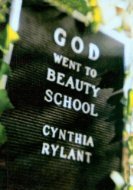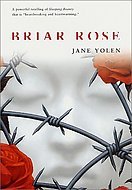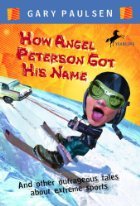Published: 2010, Riverhead
228 pages
Written by an active member of Northeast Boston Terrier Rescue, Inc., this is a compilation of Julie Klam's Boston Terrier rescue stories. The subtitle is "How Dogs Taught Me the Secrets of Happiness," and the chapters are divided into "Lessons" the author learned with the help of the various homeless dogs she encountered as a dog rescuer. Some example chapters: "Lesson Six: How to Fall In Love... Again," "Lesson Seven: How to Mourn the Loss of a Friend."
I didn't love this book, mainly because I didn't think that her anecdotes connected very well to the chapter titles. At times I couldn't even figure out what the chapter titles even meant, let alone how they connected to the text that followed. A prime example of this is "Lesson Two: How to Find the Parachute Color That's Most Flattering to You," a chapter about the author's experience trying to become an animal medium so she can talk to her dog. The ridiculousness of the story aside, I am utterly confused as to what the "Lesson" is and how it connects to the story itself.
Despite this problem (which I think could have been corrected by a keener editing eye), the stories are really funny, heartwarming, and her writing style is engaging and subtly hilarious. Any dog lover will relate to the housebreaking horror stories as well as the sweet tales of the dog-human bond. Her rescues were a great source of joy, but also of stress and heartbreak, and her stories do a good job of relating her (and her family's) conflicting emotions regarding every dog she took in.
Anyone who knows me knows I am a huge advocate of dog rescue (as opposed to buying a dog from a pet store), but I had no idea how complicated the rescue process can actually be. What surprised me most about these stories was how many people can be involved in every rescue, and how much time, effort, and expenses these average people actually contribute just to save a dog's life. I found Klam's honest depiction of the rescue process and the inner workings of the rescue group truly eye-opening and moving.
I know what you're thinking... Another dog book. But I can't be fully blamed for this one because my Mom gave it to me for Christmas, along with training sessions for her very sweet but sometimes-rude granddog Cooper. Thanks, Mom, he needs it!
 |
| Cooper, cutest dog in the world, engaging in a behavior that will soon be corrected by Grandma's gift of training |
| And after we're done with forming Cooper into a model citizen, I think I'll follow in Julie Klam's footsteps and start taking in some fosters to further complicate my life! |













